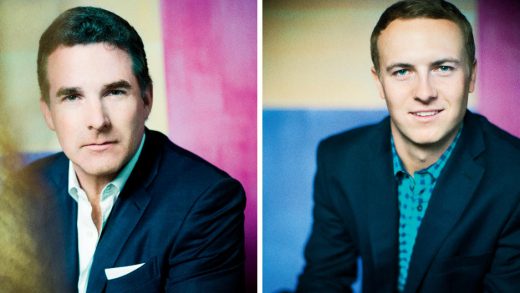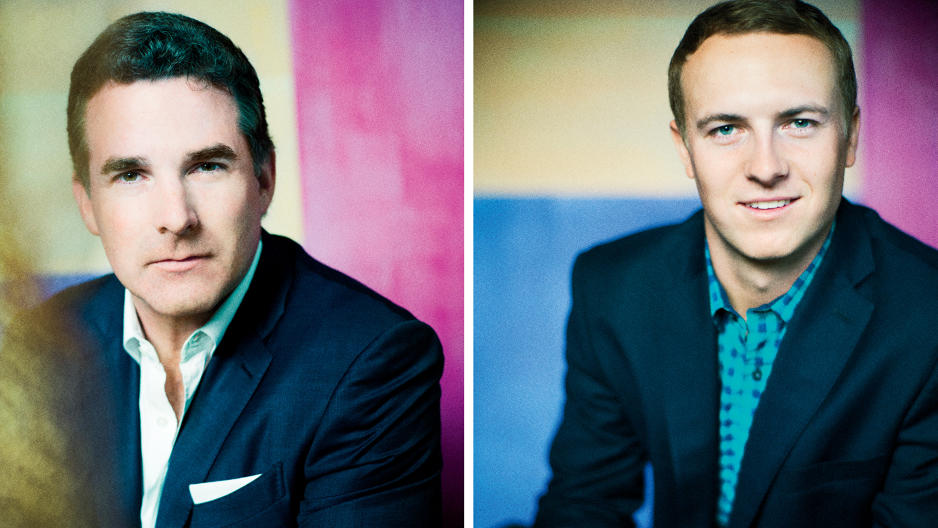Why Under Armour’s Kevin Plank And Golf Star Jordan Spieth Believe In Going For It
Kevin Plank has built Under Armour into a $5 billion business from a very modest start in the basement of his grandmother’s house. Jordan Spieth, the face of UA’s golf apparel brand, won both the Masters and U.S. Open in 2015, and last year helped bring the Ryder Cup back to the U.S. In this conversation with Fast Company’s Robert Safian at the Fast Company Innovation Festival in November, Plank and Spieth discuss how they’ve inspired and empowered each other to be better at what they do.
How did you two find your way to each other? Jordan, what is it about Under Armour as a brand or a business that made you want to associate yourself with it?
Jordan Spieth: In 2012, while I was still at the University of Texas, I visited UA’s campus in Baltimore. Kevin wanted to know my goals, my ambitions, where I saw myself in 30 years. I was 19 and about to drop out of college [to go pro], so I was like, maybe I’ll take some food money. I loved the youth, the fearlessness, and the intensity that Kevin brought. I loved the commitment that he was making to golf. And I loved that they wanted me to be the face of the brand and [that we could] help grow it together. It really fit with who I am as a person.
Kevin, what did you see in Jordan?
Kevin Plank: I don’t know if there’s any one “wow, this is the guy” moment as much as all these things that lead you to know. The relationship, the handshake, the lunch with Jordan and his dad, seeing him win, seeing him lose—all those things that reveal character. When you can find someone who is classy, decent, and smart and yet still aggressive and still believes so much, that’s somebody we’ve got [to be in business with].
Both of you embrace risk-taking. Why is that important?
KP: Let me shape this for him. Masters, 2015. Sunday. Number 13, a long par 5 over Rae’s Creek. Jordan has a two- or three-stroke lead. [The conventional, safe play] is to lay up, but you see Jordan pull out a wood and he ends up hitting it six feet from the pin. Why did you go for it?
JS: That’s a perfect example for me to explain my philosophy on how I play golf and approach life. I was playing it as, This is the best chance I have to make the lowest score I can make on this hole. I trusted myself and bet on myself on that shot, like I did the whole week. We didn’t need to back off.
Other people would say, “Oh, that is a risk,” but you don’t see it that way. Doing it the other way doesn’t occur to you.
KP: [If you played it safe], do you think you would have won the tournament?
JS: Yeah, but my percentage chance would have gone down. I was playing for the highest percentage.
KP: What’s impressed me is he literally doesn’t change the way he plays golf, whether it’s the first hole at the AT&T [tournament] or it’s number 18 at the Masters. I like that mentality. That’s why “Aggressive, young, and fearless” has become one of the mantras of our company.
JS: You’re welcome.
Kevin, you’ve been aggressive in pursuing women’s apparel, and it’s a growing part of your overall business. How does Under Armour think about the opportunity that the world of women’s sports presents?
KP: It’s the same role that we play for men. I’ve grown up in Under Armour 20 years now and also have the perspective of [my kids], a 13-year-old boy and a 9-year-old girl. I’ve recognized that I used to come home and ask, “How was practice today, son?” You’re darn right that I want my [daughter] to know that she can grow up and be whatever she chooses to be. I want to be one of those agents of change who continues to make that possible, and sports are a great accelerator for that. That ability to know what adversity is like competing at the highest level is a really important lesson. Our mission is for our women’s business to be greater than our men’s business someday. We feel that obligation—it’s our job to tell great stories, to build great product, and to inspire little girls so that they can do anything in the world they want to do.
A version of this article appeared in the February 2017 issue of Fast Company magazine.
Fast Company , Read Full Story
(42)



